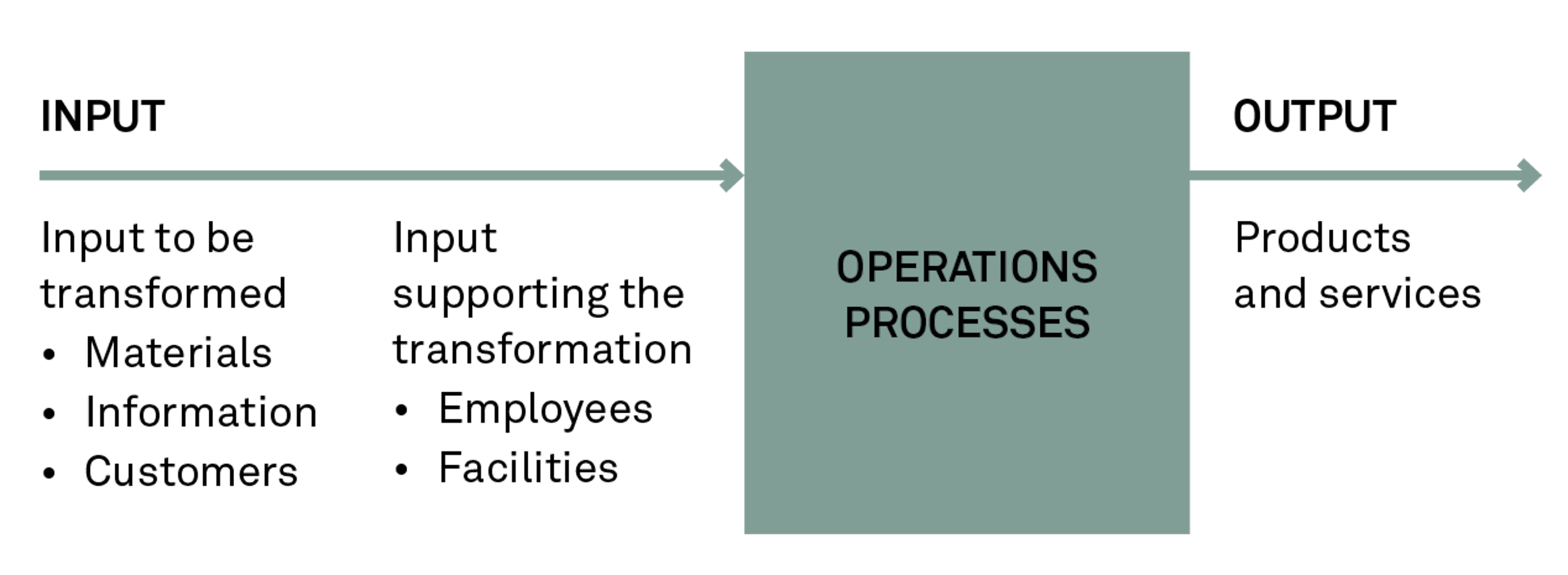How to improve service operations for the benefit of customers, employees and the company
11 October 2015
The below text is an extract – go to the top of this page to download the entire article.
In recent years, we have seen an increasing number of service companies, private as well as public, invest considerable resources in professionalising/strengthening operations in their organisation – seeking to increase efficiency in the company’s “engine room”. For this purpose, many of the companies have drawn their inspiration from the long tradition of managing and optimising the daily production in manufacturing companies. In particular, Lean thinking has served as an important source of inspiration for operational improvements in service companies.
The incentive of these investments has, in addition to increasing the efficiency of the organisation, typically also been to generate increased value for the customers as well as an improved working environment. However, it is our experience that innovation and new thinking have primarily taken place in relation to internal processes in the organisation’s ”back office”, while little attention has been given to looking into how the customers actually receive and perceive the services that are produced in the ”front office”.
At the same time, we have seen a development where specialists from the design and marketing industry have been invited to help design the service experiences that the company wishes to give its customers in the ”moments of truth” in which the customers meet the company. This may concern the design of the physical localities where the company meets its customers, the user interface on a website or the customer flow through check-in in an airport. Concurrently, emerging from the service marketing field, the concept of CEM (Customer Experience Management) is rapidly gaining ground – primarily in the USA.
A main objective of this article is to link these approaches to optimisation of operations in service companies – ”Service Operations” – and establish a holistic perspective concerning operations and development of service companies. It is, furthermore, our ambition to provide some suggestions as to the ”missing link” which, at present, seems to exist between the inside-out production approach with design of efficient processes and operational environments and the outside-in approach with design of service experiences.
Thus, we will focus on the effect that may result from operational change agents meeting designers and other specialists who design and give words to successful customer experiences.
Below we will introduce a model, the Service Delivery System, which we have developed with inspiration from our own experience with Lean in service and administration and based on dialogues with top specialists from a number of different environments. As part of our suggestion for a holistic perspective on Service Operations which combines the outside-in and inside-out perspectives, another objective is to zoom in on the fundamental differences as regards operations in back office and front office environments. This may not be new. However, we experience that many companies find it challenging to coordinate optimisation of operations in back office functions – where stable operations are usually a mantra in order to reduce costs – with optimisation of operations in the front office – where flexibility in relation to highly individualised customer service is a mantra.
The challenge is to be capable of managing an effective interaction between two different operational environments in the same organisation and to be capable of delivering exactly the service experiences that have been designed for the customers.
A third objective of this article is to describe how optimisation in the operations organisation must be approached in different manners, depending on whether it concerns optimisation of a process – such as handling a claim in an insurance company – or local optimisation of a function handling a number of different tasks – e.g. a customer service centre or a finance department. Here, we distinguish between horizontal optimisation (process) and vertical handling (a local functional unit).
We consider this article a contribution in the debate on Service Operations and continuous optimisation in service companies. We admit that we have set out to deal with quite an extensive subject area and have prioritised to take a holistic perspective rather than going into details. In this manner, we hope that we can inspire and challenge, even though we do not in any way provide all the answers, and even though the individual elements of the whole, to a large extent, will be known in advance.
The article is structured in three main sections:
- An introduction to Service Operations as a concept and to the holistic model for the Service Delivery System that we launch as a frame of reference for optimisation in service companies.
- A suggestion for four complementary approaches to service optimisation which together may be employed for creating significant improvements in service companies: service design, process optimisation, local optimisation of operations and organisational structure.
- A perspective on the strategic potential of devoting considerable efforts into optimisation of Service Operations
An important delimitation in this article is that we do not go into the strategic choices that precede the prioritisation of specific approaches and tools. We implicitly assume that the majority of organisations aim for efficient operations, high customer service and positive customer experiences in a suitable balance depending on the organisation’s strategic context.
Introduction to Service Operations
Through our work with Lean in service organisations, we have acknowledged the need for a more general frame of reference in relation to optimising operations in service companies. This has crystallised into a model for the Service Delivery System (see figure below). The model is inspired by Service Operations specialists such as Robert Johnston (author of Service Operations Management and Thomas Bøhm Christiansen (co-author of Lean – Implementering i danske virksomheder (Lean – Implementation in Danish companies)) as well as specialists from the marketing industry, among others Søren Bechmann (author of Servicedesign (Service Design)).
The following points about Service Operations have been built into the model
- It is crucial to establish an effective interaction horizontally from the point where the company meets its customers in the front office functions to the company’s ”engine room” in the back office. This is the process perspective on the organisation where processes typically run across functions.
- At the same time, it is important to address the vertical difference between the operational environments in different parts of the organisation – from front office multifunction environments to back office ”factory environments”. In the model, the mentioned difference is visually illustrated by means of a larger spread in relation to customer needs and a smaller variation in the backoffice.
This simple model provides a basis for subsequently discussing structured improvements of Service Operations by means of service design and the well-known optimisation approaches (the second part of the article).
However, before embarking on the tool box, we need to get a good grasp of two fundamental concepts, operations & service. Operations will be our point of departure. This concept originates from the manufacturing world where methods and tools for optimisation have been developed for many years – a tradition from which we can now benefit in service environments.
The concept of operations
The concept of operations has been taken from operations theory and can be defined as:
"Operations is the part of an organisation which is responsible for delivering the services and producing the products that are sold by the company in its markets."
In accordance with the simple operations model illustrated in figure 2, this is achieved through the transformation of a number of input resources in the form of materials, information or customers into the desired output in the shape of services or products. The actual transformation takes place through the execution of a number of operations processes supported by the so-called transforming input resources in the form of employees and facilities.
The operations model has, as mentioned, been taken from the production literature, but the output also includes service, as the customer in a production context will typically also buy a mix of products and services. Consequently, the majority of operations functions in production companies consciously or unconsciously deliver specific services to their customers. The point in the model, therefore, is that delivering a service or producing a product requires specific delivery models in the form of a set of processes with ancillary input.
The last decades’ increasing focus on service within the production theory has, thus, resulted in an extensive and well-developed package of tools for design and optimisation of delivery models within Service Operations.
The above text is an extract – go to the top of this page to download the entire article.


